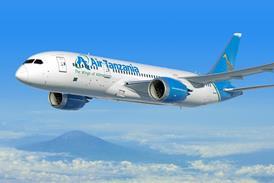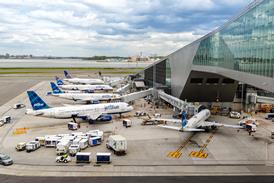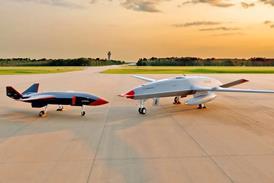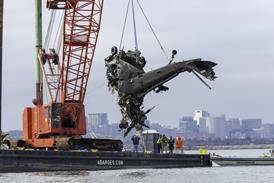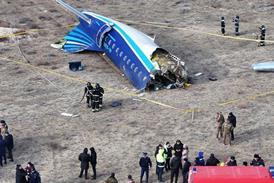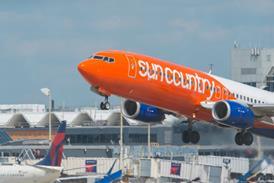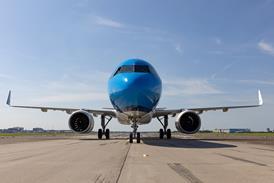The US Department of Transportation (DOT) is preparing to reduce the number of permitted flights at Newark Liberty International airport as a means to address widespread delays.
DOT secretary Sean Duffy has also disclosed more detail about several recent air traffic control (ATC) outages that hugely disrupted air travel.
The agency on 14 May will host a meeting “to discuss flight restrictions at Newark, to reduce over-scheduling and flight delays during peak hours of operation at that airport”, the DOT says in a regulatory notice.
The meeting will be open to Newark airport officials and to representatives from all US airlines.

“The goal is to have a manageable number of flights landing at Newark,” Duffy said on 12 May. “Families should not have to wait four or five hours for a flight that never takes off.”
Last week, United Airlines urged the FAA to implement slot controls at Newark as a means to reduce delays. In addition to ATC outages, runways construction at Newark has contributed to disruptions.
The DOT will propose, through 15 June when the construction is set to be done, that hourly Newark arrivals and departures not exceed 56. Between 15 June and 25 October, with some exceptions, it will propose no more than 68 flights hourly.
That is still more flights than currently scheduled at Newark. FAA acting administrator Chris Rocheleau says airlines are now scheduling 48-56 flights hourly.
During the 14 May meeting, Federal Aviation Administration officials will ask airline representatives “to offer flight reductions or schedule modifications”. Afterwards, the FAA intends “to publish its final order on [Newark] delay reductions”.
The DOT classifies Newark as a Level 2 airport – meaning the agency coordinates with airlines to help ensure they do not schedule too many flights.
Level 3 airports are those at which the FAA actually caps the number of flights by issuing slots.
It is unclear if the DOT is considering shifting Newark to Level 3. The agency did not immediately respond to a request for comment.
Newark has been the epicentre of US flight delays in recent weeks due largely to equipment outages affecting the FAA’s Philadelphia Terminal Radar Approach Control site, which manages Newark air traffic.
Three incidents – on April 28, May 9 and May 11 – involved “very brief outages” of the FAA’s Standard Terminal Automation Replacement System, resulting in “radar data displays going down” at the Philadelphia site, Duffy said on 12 May.
The failures lasted about 30sec. In at least one case, ATC computers needed another 60sec to reboot, leaving controllers unable to track aircraft for 90sec. The outages also interrupted FAA phone lines and radio transmissions, Duffy says.
The trouble stems from the FAA’s decision, made during the administration of President Joe Biden, to shift Newark control from New York to the Philadelphia centre for the purpose of alleviating pressure at the understaffed New York site.
Communications carried to the Philadelphia site must be slowed significantly before feeding the FAA’s 1980s-era ATC equipment, Duffy says. “We still have to dumb down the data feed for these outdated systems.”
Recent outages occurred because the main telecommunication line failed. In at least one case, a backup link also went down due to failure of the system used to slow the data, Duffy says.
He alleges that the FAA had not adequately tested the telecom reliability before shifting Newark control to Philadelphia.
The DOT last week implemented a “software patch” to keep backup lines from failing. The agency is also working with contractors L3Harrris and Verizon to install three more telecom lines between New York and Philadelphia, says Duffy.

